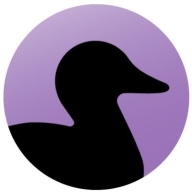

Coverity and GitGuardian cater to various facets of software security, with Coverity often favored for its integration capabilities and GitGuardian valued for rapid secrets detection.
Features: Coverity stands out with its integration with CI/CD tools like Jenkins and GitLab, comprehensive language support, and its capability to detect vulnerabilities in complex code. GitGuardian, known for fast secrets detection, excels in real-time incident response, developer feedback mechanisms, and efficient secret management automation.
Room for Improvement: Coverity can enhance user-friendliness, API consistency, and UI design while offering flexible pricing for smaller teams. GitGuardian's potential advancements include better Azure DevOps integration, detailed analytics on developer actions, and a mobile app for monitoring.
Ease of Deployment and Customer Service: Coverity provides robust customer support, being suited for enterprises with on-premises needs, yet its support varies in response time. GitGuardian offers flexible deployment from public to private environments with a noted need for more consistent customer service enhancements.
Pricing and ROI: Coverity is often seen as expensive but offers solid ROI through its extensive feature set and early defect detection. GitGuardian, while also perceived as high in cost, offers justified pricing based on its secret detection strengths, with its free tier making it accessible for budget-conscious users.


Coverity gives you the speed, ease of use, accuracy, industry standards compliance, and scalability that you need to develop high-quality, secure applications. Coverity identifies critical software quality defects and security vulnerabilities in code as it’s written, early in the development process, when it’s least costly and easiest to fix. With the Code Sight integrated development environment (IDE) plugin, developers get accurate analysis in seconds in their IDE as they code. Precise actionable remediation advice and context-specific eLearning help your developers understand how to fix their prioritized issues quickly, without having to become security experts.
Coverity seamlessly integrates automated security testing into your CI/CD pipelines and supports your existing development tools and workflows. Choose where and how to do your development: on-premises or in the cloud with the Polaris Software Integrity Platform (SaaS), a highly scalable, cloud-based application security platform. Coverity supports more than 20 languages and 200 frameworks and templates.
GitGuardian is an advanced secrets security platform that strengthens Non-Human Identity security and ensures compliance with industry standards by detecting and managing secrets in development environments.
GitGuardian integrates Secrets Security and Secrets Observability, facilitating the detection of compromised secrets and managing legitimate secrets' lifecycle. Supporting over 450 types of secrets, the platform offers public monitoring for leaked data and employs honeytokens as an added defense. Trusted by over 600,000 developers, organizations such as Snowflake and ING rely on GitGuardian for robust secrets protection.
What features define GitGuardian?In sectors like healthcare and telecommunications, GitGuardian is implemented for detecting and managing the exposure of sensitive information in code repositories. Teams benefit from its ability to integrate with platforms such as GitHub, allowing for immediate alerts and efficient remediation of security risks, enhancing application security by safeguarding operational environments.
We monitor all Static Application Security Testing (SAST) reviews to prevent fraudulent reviews and keep review quality high. We do not post reviews by company employees or direct competitors. We validate each review for authenticity via cross-reference with LinkedIn, and personal follow-up with the reviewer when necessary.